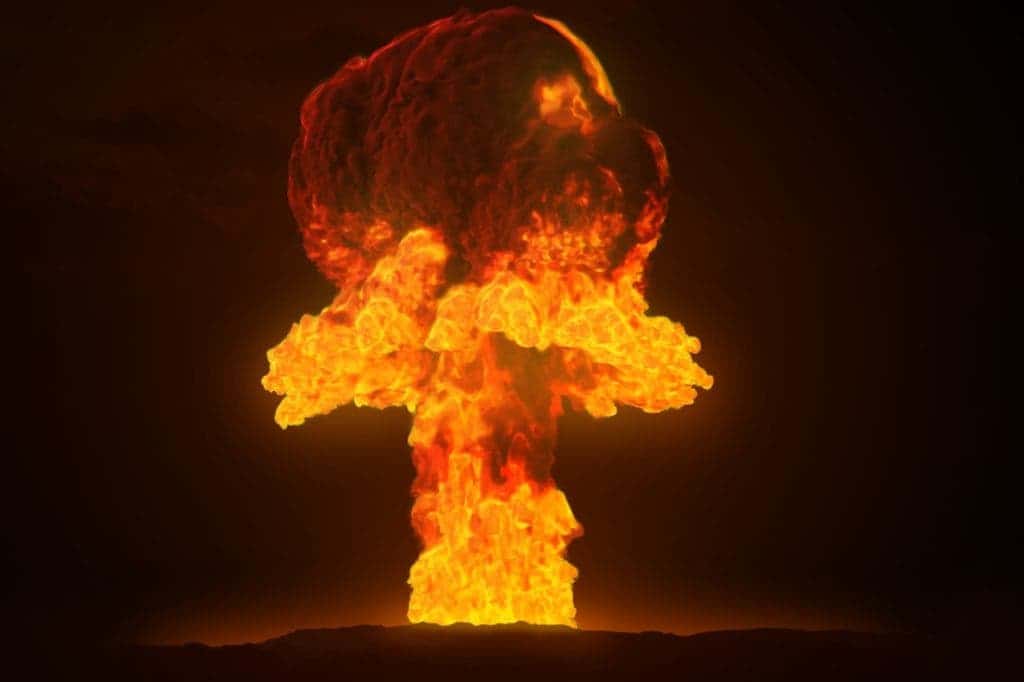In what can only be considered perfect timing, a team of researchers published an analysis on what would happen in the case of a nuclear war — a small one, between India and Pakistan.
The conclusion? It would be a complete disaster for everyone.

Unprecedented planet-wide food shortages and probable starvation lasting more than a decade — that’s what the world can expect if India and Pakistan (two countries who have had their fair share of adversity) launch a nuclear war.
India and Pakistan aren’t exactly nuclear powerhouses — that elite club is reserved for the US and Russia, who combined, own almost 95% of the world’s 14,000 nuclear warheads.
It’s estimated that India and Pakistan each have about 150 warheads — relatively, it’s not a lot, but practically, it’s still enough to wreak havoc.
The recent study examined the potential effects if both countries released 50 Hiroshima-sized bombs. The assumption is that this doesn’t further escalate and remains a localized war.
“Even this regional, limited war would have devastating indirect implications worldwide,” said Jonas Jägermeyr, a postdoctoral scientist at the NASA Goddard Institute for Space Studies who led the study. “It would exceed the largest famine in documented history.”
In addition to all the people that would be killed, the bombings would launch some 5 million tons of soot into the stratosphere. From there, it would spread around the globe, absorbing sunlight and lowering global temperatures by 1.8 degrees Celsius almost immediately.
This shift would last for at least five years, and would cause the production of main cereal crops to drop by an average 11% — sufficient to bring about widespread famine.
“While crop failures after historic volcanic eruptions are documented, a nuclear conflict can cause even more severe and longer-lasting climate anomalies,” the study reads.
The northerly areas of US, Canada, Europe, Russia, and China, would be affected the most in terms of production. Yet, paradoxically, southern regions would suffer more hunger — particularly because southern areas have fewer surpluses and have a more difficult task feeding themselves as it is. The more developed north can cope better with loss, whereas the south is very vulnerable. According to the authors, 70 underdeveloped countries with a cumulative population of 1.3 billion people would then see food supplies drop more than 20%, when the net effect of trade is considered.
This is not meant to serve as a manual for what to do in case of a nuclear war. Rather, it is a warning that nuclear war, even in a localized fashion, would be absolutely catastrophic. It’s a reminder that although other threats make the headlines (and often, for justified reasons), nuclear weapons still exist, and they still represent a hidden threat to society’s wellbeing.
If nuclear weapons continue to exist, “they can be used with tragic consequences for the world,” said study co-author Alan Robock, a climatologist at Rutgers University who has long studied the potential effects of nuclear war. “As horrible as the direct effects of nuclear weapons would be, more people could die outside the target areas due to famine.”
The study might even be on the conservative side. We don’t really know what bombs India and Pakistan have available, but it’s very likely that they have access to larger bombs than the ones modeled in this study.
In addition, the study didn’t look at the effects such an event would have on India and Pakistan themselves — two countries which, together, account for around 1.6 billion people, or 20% of the globe’s population.
India and Pakistan would almost certainly be the worst affected by this, but researchers wanted to avoid mixing up the direct effects of a war with the indirect ones (which is what they were analyzing).
Although the researchers did not study this, Jägermeyr said that one could reasonably assume that food production in the remnants of the two countries would drop essentially to zero. The cascading effects of this would transform what would already be a worldwide crisis, into an unprecedented catastrophe. Furthermore, the researchers did not factor in the effects of radioactive fallout, which could render many agricultural areas unusable, nor the possibility that the soot in the atmosphere could heat up, as it cools the planet. This effect would cause stratospheric ozone to dissipate, allowing more ultraviolets into the Earth’s surface, further affecting agriculture.
It’s a sobering reminder to the destruction we are capable of bringing into this world — and that we’d be wise to avoid using.
“We’re not saying a nuclear conflict is around the corner. But it is important to understand what could happen,” concludes Jägermeyr.
The study “A regional nuclear conflict would compromise global food security” has been published in PNAS.






